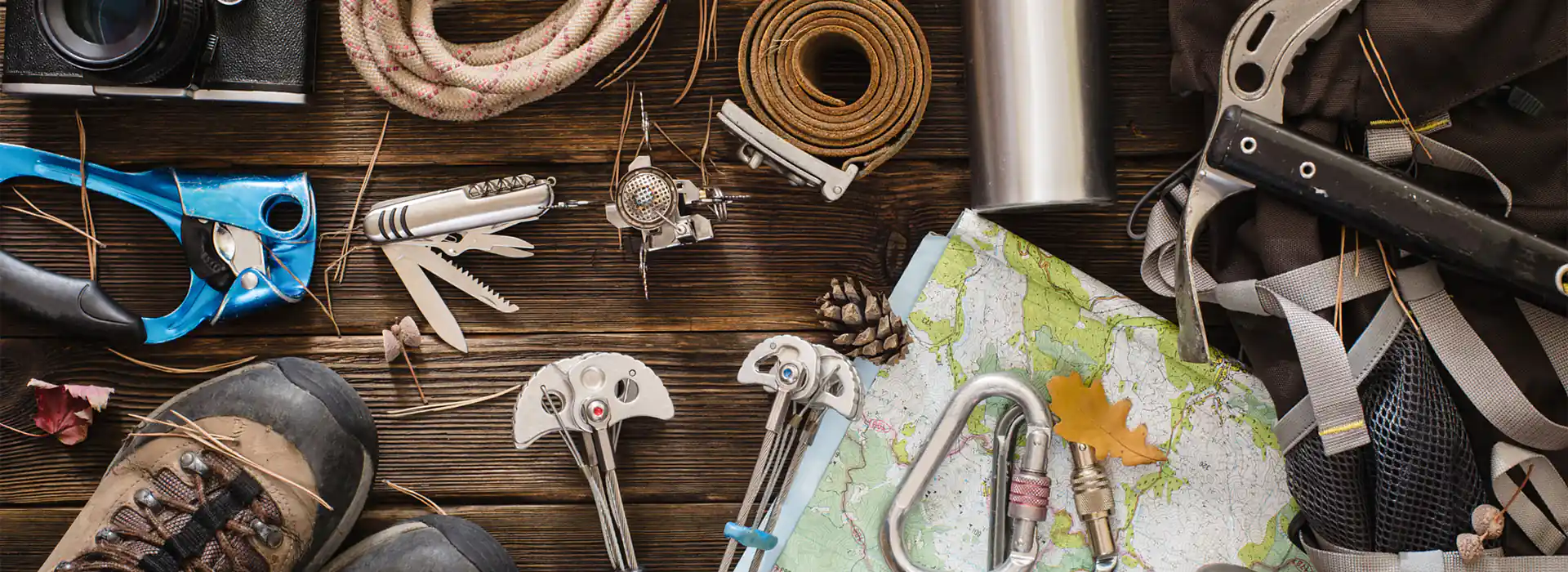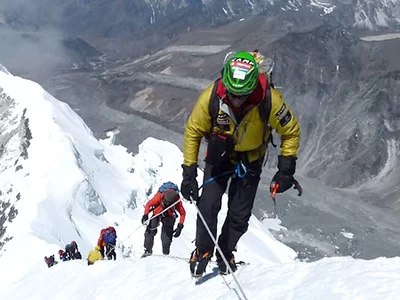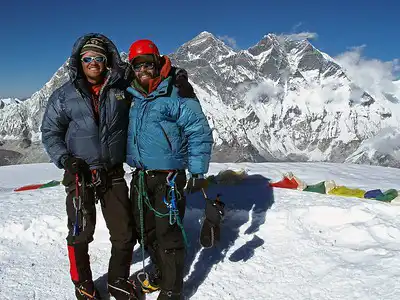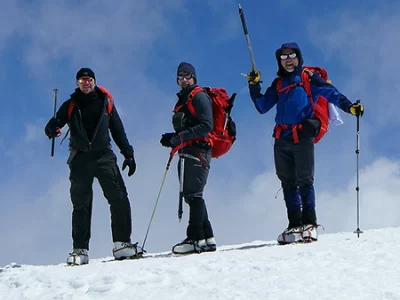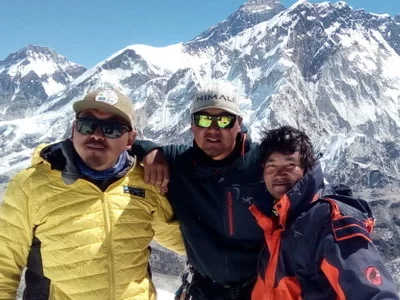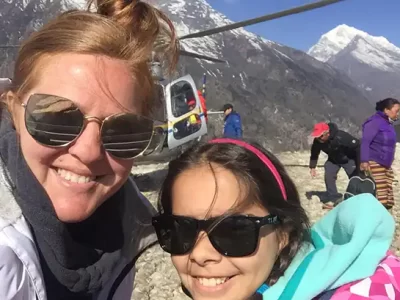Island Peak, also known as Imja Tse, stands at 6,189 meters (20,305 feet) and remains one of Nepal’s most popular trekking peaks. Located in the heart of the Everest region, this peak offers climbers a unique mix of trekking and mountaineering. A well-thought-out Island Peak Packing List will ensure you are fully prepared for the tough physical and environmental challenges you’ll face on this high-altitude climb.
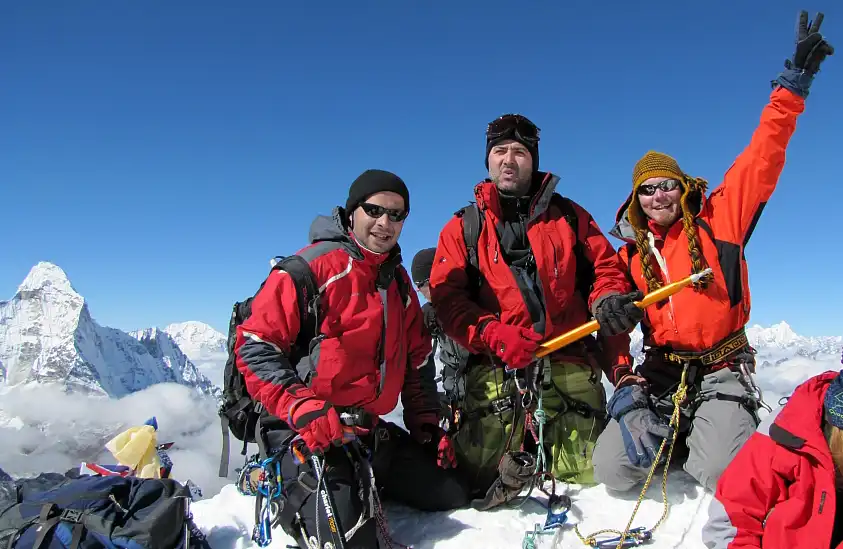
Climbers flock to Island Peak to witness stunning views of Everest, Lhotse, and Makalu. For many, it also serves as a stepping stone into technical mountaineering. Here’s why Island Peak continues to be a favorite among high-altitude climbers:
Why Climbers Love Island Peak
- Perfect Introduction to Mountaineering: The ascent of Island Peak gives the best opportunity for novices to practice technical climbing. You will use crampons and ice axes and climb on snow and ice slopes.
- Breathtaking Views of Himalayan Peaks: This climb offers views of the highest mountains in the world, including Everest, Lhotse, and Ama Dablam. The beautiful views add extra fun to the climb.
- Accessible but Challenging: Island Peak offers an easy and moderate slope for climbers of average fitness. It is technical, but it is possible for those who undertake the preparations and acclimatization very well.
- Combination of Trekking and Climbing: Before climbing Island Peak, there will be a trekking adventure to the renowned Khumbu Valley, where you can take Namche Bazaar and Dingboche. It blends both activities, making them more enjoyable.
- Preparation for Higher Peaks: More and more travelers use Island Peak, which stands at 6,189 meters, to acclimatize and train before attempting ascents to Everest or Lhotse. It equips the climber with the necessary technical expertise and physical fitness for tougher climbs.
- Cultural Immersion: While starting on the trek towards Island Peak, one gets to visit the Sherpa and partake in their way of life and hospitality. It allows one to observe this well-preserved way of life in a high-altitude trekking community called the Sherpas.
Island Peak Climbing with EBC Trek
Ama Dablam Expedition
Mera Peak Climbing
Comprehensive Island Peak Packing List: Essential Gear for a Successful Climb
Appropriate gear is essential for safety and success when climbing Island Peak. Your Island Peak Packing List should include climbing equipment, clothing suitable for changing weather conditions, and navigation tools to keep you on track. Below is a detailed breakdown of the essential items you must bring.
Climbing Equipment
To safely summit Island Peak, climbers require specific technical gear for high-altitude mountaineering. Here’s what you should include:
- Crampons: Ensure your crampons fit your climbing boots perfectly. They are essential for gripping icy slopes and providing stability on steep terrain.
- Ice Axe: A lightweight mountaineering ice axe is necessary for navigating ice fields and providing additional support on ascents.
- Harness: A comfortable, adjustable harness is crucial for safety, especially when crossing crevasses or using fixed ropes.
- Carabiners: Bring both locking and non-locking carabiners. These versatile tools will connect your rope to various points during the climb.
- Rope: A durable climbing rope, preferably dynamic, is essential for securing yourself during technical sections of the climb.
- Helmet: Protect your head from falling rocks or ice by wearing a certified climbing helmet.
Clothing for Varying Weather Conditions
Island Peak’s weather can change rapidly, so clothing is vital. Layers are the key to staying warm, dry, and comfortable throughout your climb.
- Base Layers: Choose moisture-wicking thermal wear. Merino wool or synthetic materials regulate body temperature and wick sweat away from the skin.
- Mid-Layers: Fleece or down jackets provide insulation and keep you warm during cold mornings and evenings. They should be lightweight and packable.
- Outer Layers: A waterproof, windproof jacket and pants protect you from snow, wind, and rain. Make sure these items are breathable to avoid overheating.
- Climbing Boots: High-altitude climbing boots that are warm, waterproof, and crampon-compatible are a must. They should also offer good ankle support for rocky and uneven terrain.
- Gloves: Bring insulated gloves for warmth and a thinner pair for dexterity. We recommend wearing waterproof gloves.
- Hat and Neck Gaiter: A warm hat and neck gaiter protect you from cold winds, especially at higher elevations.
- Socks: Invest in high-quality wool socks to keep your feet warm and dry. Bring several pairs to change as needed.
Navigation Tools
Navigating your way to Island Peak requires reliable tools to ensure you’re always on the right path. Always prioritize safety by including these navigation essentials:
- GPS Device: A GPS device helps you track your route and ensures you’re heading in the right direction. Make sure it’s fully charged and pack extra batteries.
- Maps: Carry a detailed map of the Island Peak climbing route. Although guides often know the way, it’s always good practice to have a map on hand.
- Compass: A compass serves as a reliable backup to electronic devices. Ensure you know how to use it in case your GPS fails.
- Altimeter: An altimeter helps you track your elevation, giving you a better understanding of how close you are to high camps and the summit.
Lobuche Peak Climbing
Everest Base Camp Trek
Everest Base Camp Trek with Helicopter Return
Island Peak Packing List: Crucial Personal Items for a Safe and Successful Climb
Personal items are crucial to your comfort and safety when planning your Island Peak climb. In addition to technical gear, your Island Peak Packing List should include sun protection, a well-equipped medical kit, and hydration and nutrition essentials. Here’s a list of essential personal items to keep you healthy and energized throughout your ascent.
Sun Protection
The sun’s rays are much stronger at high altitudes, increasing your sunburn and eye damage risk. Adequate sun protection is essential:
- Sunglasses: Invest in high-quality sunglasses with UV protection and a wrap-around design to shield your eyes from the intense sun and snow glare.
- Sunblock: Protect your skin from sunburn and long-term damage by applying a high SPF (30 or higher) broad-spectrum sunscreen. Apply it frequently, especially on exposed skin like your face and neck.
- Lip Balm with SPF: Dry air and harsh sunlight can irritate your lips. A lip balm with high SPF will protect your lips from sunburn and dryness.
Medical Kit
Climbing at high altitudes comes with specific health risks, including altitude sickness. Having a well-stocked medical kit can make a significant difference in your well-being:
- Altitude Sickness Medication: Prepare for high-altitude travel by bringing Diamox (Acetazolamide) to help prevent altitude sickness. Always consult your doctor for personalized advice.
- Basic First Aid Supplies: Pack bandages, antiseptic wipes, adhesive tape, and blister treatment to handle minor injuries, cuts, or scrapes during the climb.
- Pain Relievers and Anti-Inflammatories: Medications like ibuprofen or aspirin can help relieve headaches or muscle pain often associated with high-altitude trekking.
- Personal Prescriptions: Bring enough of your daily medications and extras for the entire trip in case of delays.
Hydration and Nutrition
Staying hydrated and well-nourished is vital when climbing Island Peak. Your body works harder at high altitudes, so proper hydration and energy intake are critical:
- Water Bottles or Hydration Systems: Carry at least two liters of water per day. Hydration bladders like CamelBak systems are convenient for continuous sipping, but insulated water bottles are a good backup to prevent freezing at higher altitudes.
- Electrolyte Supplements: Add electrolyte tablets or powders to your water to replace lost salts and maintain energy levels, especially during long hours of physical exertion.
- Energy Bars and Supplements: High-calorie energy bars, nuts, dried fruits, and protein supplements will help keep your energy levels up throughout the climb. Focus on lightweight, nutrient-dense foods that are easy to pack and consume.
Island Peak Packing List: Technical Gear and Documentation Essentials
Having the right technical gear and documents is crucial for a smooth and safe climb of Island Peak. Your Island Peak Packing List should include top-quality tents, sleeping gear, efficient cooking equipment, and all the necessary permits and identification. Below is a detailed guide on what to pack to ensure you’re fully prepared.
Technical Gear
Tents and Sleeping Gear
Spending nights in high-altitude conditions requires reliable gear for cold, harsh environments. Here’s what you need:
- Tents: Choose a four-season tent that can withstand strong winds and snow. It should be lightweight and offer proper ventilation to minimize condensation inside.
- Sleeping Bags: Bring a sleeping bag rated for temperatures as low as -20°C (-4°F) or colder. Whether you prefer synthetic or down-filled sleeping bags, ensure they provide enough warmth for frigid nights at higher altitudes.
- Insulating Mats: Use an insulating mat or sleeping pad to block cold from the ground. Self-inflating or closed-cell foam mats offer comfort and extra insulation, keeping you warm throughout the night.
Cooking Equipment
Preparing meals at high altitudes requires portable gear that can function well in cold and windy conditions. Here’s what you should pack:
- Portable Stoves: Choose a lightweight, high-altitude stove that works effectively in freezing temperatures. Ensure you have a reliable stove and pack enough fuel for the trek.
- Fuel: Bring sufficient fuel canisters to meet your cooking needs. Be sure the fuel is compatible with your stove, and plan for increased fuel consumption due to the high altitude.
- Lightweight Cooking Gear: Use lightweight and durable pots, pans, and utensils. Opt for titanium or aluminum cookware, which are strong, lightweight, and ideal for mountaineering.
Documentation
Before you start the climb, ensure you have all the necessary permits and identification. Missing documents can cause unnecessary delays. Here’s what you need:
- Climbing Permits: Island Peak requires a climbing permit from the Nepal Mountaineering Association (NMA). Arrange this permit beforehand, either through your trekking agency or independently.
- Sagarmatha National Park Entry Permit: Since Island Peak is within the Sagarmatha National Park, you must obtain this entry permit. It helps fund environmental preservation and supports local communities.
- Khumbu Pasang Lhamu Rural Municipality Entrance Permit: You will also need this permit to trek through the Khumbu region. You can obtain it in Lukla or Monjo, and it’s mandatory for anyone heading toward Island Peak.
- Identification Documents: Carry a copy of your passport and any other required IDs. It’s smart. It brings physical copies and digital backups in case any documents get lost.
Island Peak Packing List: Fitness and Preparation Essentials
Preparing for Island Peak requires more than just collecting gear; you must also focus on physical preparation and proper acclimatization. Including these fitness and preparation strategies in your Island Peak Packing List can make a huge difference in your success on the mountain.
Physical Preparation
It would be best if you were in good shape to tackle a mountain like Island Peak. Here’s how you can get physically prepared:
- Cardiovascular Training: Start doing cardio exercises like running, cycling, or swimming about six months before your climb. Gradually increase both the duration and intensity to build stamina.
- Strength Training: Strengthen your legs, core, and upper body. Focus on exercises like squats, lunges, planks, and pull-ups, which will help you handle the physical demands of the climb.
- Hiking Practice: Get into the habit of hiking regularly with a loaded backpack. It improves your endurance and helps you adjust to long trekking days that you’ll encounter on Island Peak.
- Flexibility: Include flexibility exercises like yoga or stretching to reduce injury risk and improve mobility during your climb.
Acclimatization Strategies
Adapting to high altitudes is essential to avoid altitude sickness. Here’s what you should focus on:
- Gradual Ascent: Always ascend at a steady pace. Slow progress gives your body time to adjust to lower oxygen levels.
- Stay Hydrated: Drinking lots of water can aid in acclimatization. Dehydration can often mimic altitude sickness symptoms, so hydration is key.
- Acclimatization Days: Schedule acclimatization days in your trekking plan. Use these days to climb higher during the day and return to lower altitudes to sleep, which helps your body adjust.
- Recognize Symptoms: Learn to recognize altitude sickness symptoms like headaches, nausea, and dizziness. Responding quickly by resting or descending is crucial for your health and safety.
Island Peak Packing List: Environmental Considerations
Being mindful of the environment is a key part of climbing Island Peak. Your Island Peak Packing List should include strategies for minimizing environmental impact and understanding local weather patterns.
Leave No Trace Principles
Following Leave No Trace principles helps you preserve the natural environment:
- Plan and Prepare: Know the regulations for Island Peak and prepare accordingly. It will reduce your environmental footprint.
- Dispose of Waste Properly: Carry out all your trash, including leftover food. Only use established campsites to minimize damage to the land.
- Leave What You Find: Don’t disturb cultural or historic structures or remove natural objects like rocks or plants.
- Respect Wildlife: Stay away from wildlife and never follow or approach animals. Observing them from afar ensures you don’t disturb their habitat.
Weather Conditions
Understanding Island Peak’s weather helps you choose the best time to climb and pack the right gear:
- Best Climbing Months: April, May, October, and November are the best months to climb Island Peak. These months offer more predictable and stable weather.
- Prepare for Sudden Changes: The weather can change quickly in the mountains. Always pack appropriate gear to handle sudden drops in temperature or storms.
- Monitor Weather Forecasts: Monitor weather forecasts as you approach your climb. If conditions worsen, be flexible and adjust your plans.
Island Peak Packing List: Essential Safety Measures for a Safe Climb
Prioritizing safety is crucial when planning your Island Peak climb. Including the proper safety measures in your Island Peak Packing List will ensure you’re prepared to handle emergencies and unexpected situations. Below is a detailed guide on key safety items, including emergency signaling devices, evacuation protocols, and accessing local rescue services.
Emergency Protocols
Emergency Signaling Devices
Carrying the right signaling devices allows you to alert others during emergencies. Here are the key items you should pack:
- Whistle: A loud whistle can save your life if you get separated from your group or find yourself in low-visibility conditions. Climbers recognize three whistle blasts as the universal distress signal in the mountains.
- Personal Locator Beacon (PLB): A PLB is vital for sending out a distress signal and your GPS location to emergency responders. It’s especially useful in remote areas where cell service isn’t available, ensuring you can call for help from anywhere.
- Satellite Phone: A satellite phone provides a dependable way to communicate in remote areas such as Island Peak. Keep it fully charged, as it allows direct contact with rescue services, especially during emergencies.
Evacuation Procedures
Knowing how to evacuate in case of altitude sickness or injury is essential for staying safe. Here’s what you need to keep in mind:
- Self-Evacuation: If you notice mild symptoms of altitude sickness, descend to a lower altitude immediately. Even descending a few hundred meters can alleviate symptoms and improve your condition.
- Helicopter Evacuation: In cases of severe altitude sickness, injuries, or medical emergencies, you may require a helicopter evacuation. Make sure your travel insurance covers high-altitude rescues. Local guides will assist with arranging helicopter services if necessary.
- Group Communication: Keep your group informed of any health concerns. Ensure everyone knows the location of first-aid supplies and emergency gear. Establish a clear communication plan for dealing with emergencies as a team.
Local Rescue Services
Island Peak, located in the Everest region, offers access to reliable local rescue services. Here’s how to make sure help is available when needed:
- Rescue Helicopters: If an emergency arises, your guide or trekking agency can quickly dispatch local rescue helicopters. Rescue missions typically focus on serious medical situations, such as severe altitude sickness or major injuries.
- Local Guides: Trained local guides know how to handle common climbing issues, including altitude sickness and injuries. They have connections to rescue teams and can help facilitate evacuations when necessary.
Conclusion: The Importance of a Well-Planned Island Peak Packing List
Packing the right gear for your Island Peak climb is critical to ensuring safety and enjoyment. The high-altitude environment and unpredictable weather require specific equipment and clothing to handle the challenges effectively. A well-thought-out Island Peak Packing List keeps you comfortable, protected, and prepared for the technical aspects of the ascent.
Always review your packing list with your tour operator before setting off. They can provide additional advice based on the region and season. By packing carefully, you minimize risks and set yourself up for a successful and enjoyable Island Peak climb.
